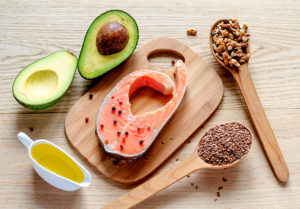We are in the midst of a very intense time of the year, with holidays and seasonal celebrations like Thanksgiving (recently past), Hanukkah this week and Christmas a mere two-plus weeks away.
Wrap that up with a New Year’s celebration and “Wham”—more friends, family and food/alcohol than one normally enjoys in a three-month period.
Yet it can also be the season of SAD—seasonal affective disorder when the amount of daylight decreases daily, and for those of us in the northern latitudes, cold weather intensifies. We’re eating more, getting less sunshine and quite probably less exercise. Hibernation is great for bears, not so good for humans.
It’s the wintertime blues. For myself and many, once the solstice passes and day length starts to increase, mood improves. But noticeable day-length increases don’t really occur here until mid-February. That’s a long time to feel the blues.
Anti-Blue Therapy
Of course, light therapy helps. One can purchase a lamp that emits a light spectrum that replaces the amount and intensity of light missing from the sun during late fall and early winter.
Or you could go to Norway, where they’re using mirrors, light therapy and the power of positive thinking to improve mood and survive the long dark blues of winter days.
We know that exercise helps—in fact, if it weren’t so cold and slippery, one would think that January and February would be great months for marathon training, with the release of endorphins due to those long runs.

Embracing a Different Blues
While prepping for a blog about dietary fat and carbohydrates, I stumbled on a blue zones article—remember the blue zones?
In 2005, National Geographic fellow Dan Buettner wrote about several locations on Earth where men and women lived exceptionally long lives, with almost no incidence of the chronic conditions obesity, cardiovascular disease and diabetes.
These diseases have been on a sharp increase in the U.S. for the past 40 years—and the slope of that disease incidence line has intensified in the last decade.
This increase in chronic disease could make a person feel blue at the equator in July!
Chronic disease affects everyone. We tend to eat like and mimic the activity patterns of the people we spend the most time with. The Framingham studies provide the data to prove it. One person’s chronic health issues affect many more people.
This article needs some redemption. How about an injection of happy here?
Focus on the Positive; Lessons Learned from the Blue Zones
The Blue Zone locations include: Ikaria, Greece; Okinawa, Japan; Ogliastra Region, Sardinia; Loma Linda, California; and Nicoya Peninsula, Costa Rica.
It’s intriguing that persons in five different locations on the planet have these lifestyle habits in common. Blue moods is not one of their traits and maybe, during these short cold days, you might feel as inspired as I do by traits and habits that have enabled blue zoners to have long lives nearly free of disease.
This information has been collected and studied by a team of scientists, physicians and data analysts. Those habits are summarized here.
The Blue Zone Power Nine
Here is a brief summary of the habits that blue zone people share.
- They move naturally. A commonality is that these people live in environments that encourage them to move—they walk, they garden and they do not use mechanical tools to aid house and yard work. You won’t find a leaf blower in the blue zones.
- They have a sense of purpose, a reason to get up in the morning.
- They downshift. Yes, there is some stress in their lives, but they have established routines to let go of their stress, be it prayer, happy hour or honoring their ancestors.
- They have more stringent eating habits. In Okinawa there is a 2,500-year-old Confucian mantra said before meals that reminds them to stop eating when they are 80% full. In all locations, the last meal of the day is the smallest.
- Plant-based food is best. Beans play a major part in most centenarian diets. Meat is generally pork, and enjoyed but only about once a week. Serving sizes are 3–4 oz.; think of the size of a deck of cards.
- They enjoy wine with friends. With the exception of Adventists in the Loma Linda, CA blue zone, all others enjoy moderate amounts of alcohol, regularly. 1–2 glasses of wine per day, with friends or family is common.
- Most centenarians of the blue zones belong to some faith group—denomination varies but research has found that attending faith-based services four times monthly adds years to life span.
- They keep family close. Aging parents and grandparents are kept nearby or in the home. This has been shown to lower mortality of children in the home as well. The blue zoners commit to a life partner as well, and invest in their children with time and affection.
- They choose or are born into social circles committed to healthy behaviors. Okinawans, for example, create groups of five friends committed to each other for life in support of healthy behaviors.
Persons in the blue zones naturally understand and put into practice the benefits of a social network (presumably without the use of computers).
Focusing on adapting some of these habits is going to be my new tool for surviving the short, dark days and winter blues. There might be a 2019 resolution or two in there even.
If you’re still reading this blog, I bet you have a blue zone habit or two in your life? We’d love to hear about your habits—either in progress or soon to be adopted.
In the meantime, let’s meet at a solstice bonfire and celebrate, maybe with a glass of wine. Bring the spouse and kids!
